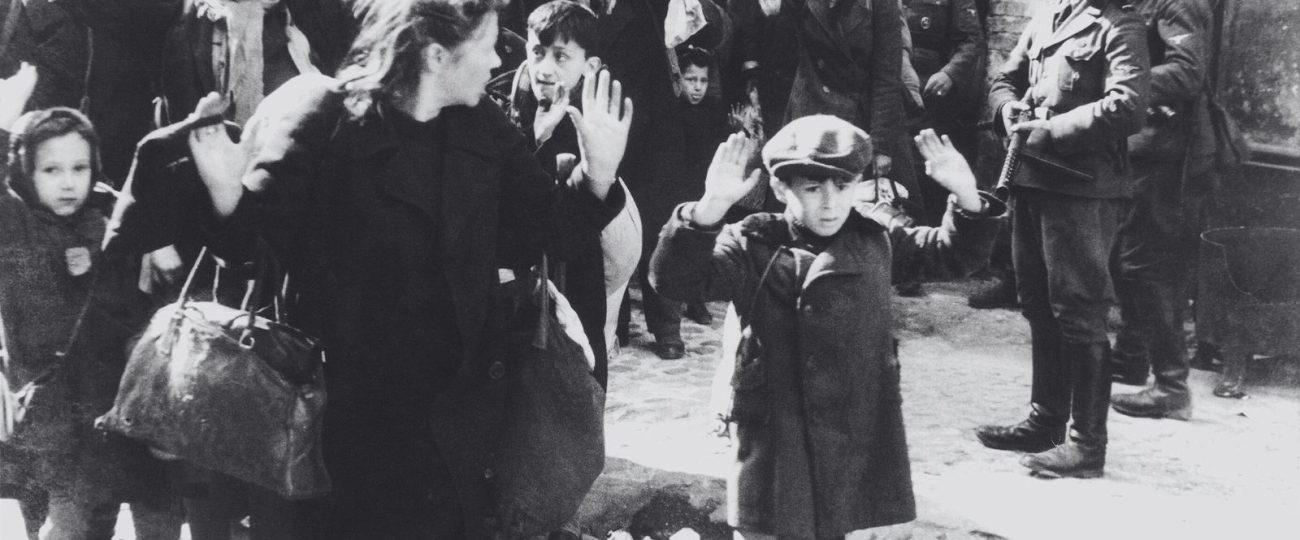What Happened On November 16th?
On November 16, 1940, German forces sealed the Warsaw Ghetto, confining over 350,000 Jewish residents within towering walls. Armed guards blocked every entrance, completing a 10-foot barrier topped with barbed wire that surrounded roughly 1.3 square miles of the city. This brutal confinement divided families and entire neighborhoods, leaving the Jewish community restricted to overcrowded rooms and narrow alleyways. That day, residents faced a harsh new reality: their connection to the outside world had vanished, and they were trapped in their own city.
The German authorities imposed extreme rationing on food and supplies, limiting Jews to a mere 180 calories per day—a fraction of the amount needed to survive. Starvation became an immediate, daily struggle, and food prices within the ghetto skyrocketed. The Nazis provided only minimal medical supplies, making even basic care nearly impossible. Diseases, particularly typhus, spread rapidly in the cramped, unsanitary quarters, where as many as ten or more people shared a single room. Smugglers, many of them children, crawled through cracks in the walls and sewers to bring in bread, potatoes, and other scarce items. Although these journeys carried great risk, the supplies they provided sustained lives and kept hope alive.
Inside the ghetto, residents fought each day for food, medicine, and warmth. Families crowded into tiny, unheated rooms, pooling resources and rationing what little they had. An underground economy emerged, fueled by exchanges of smuggled goods and bartered valuables. Even under these harsh conditions, people preserved their Jewish culture and identity, refusing to surrender to despair. Makeshift soup kitchens appeared, serving as many as possible, while people who had little to spare shared clothing and blankets to help others endure Warsaw’s cold winters.
Despite the Nazis’ intent to strip the Jewish residents of dignity, people found ways to resist intellectually and spiritually. Underground newspapers circulated, bringing news from outside and spreading messages of unity. One paper, Gazeta Żydowska, shared information on health, smuggling, and the brutal realities of ghetto life. Teachers, musicians, and rabbis worked in secret, strengthening the community’s resilience. In hidden classrooms, children learned Jewish history, math, and language, defying Nazi orders to erase their heritage. Families gathered in makeshift synagogues, holding on to their traditions and hoping for a future beyond the walls.
The ghetto also became a center of organized resistance. Mordechai Anielewicz, a young leader who later spearheaded the Warsaw Ghetto Uprising, built networks to resist the Nazis. At just 21, Anielewicz rallied residents and formed the Jewish Combat Organization (ŻOB), gathering resources and preparing for a future confrontation. His determination to resist, even against overwhelming odds, inspired many others. The ŻOB smuggled weapons into the ghetto with the help of Polish resistance fighters, hiding guns, grenades, and Molotov cocktails within hollowed walls and attics.
Anielewicz’s early experiences equipped him to lead the resistance. Born in 1919 in Wyszków, he joined socialist-Zionist youth groups in Warsaw and engaged in activism when Germany invaded Poland in 1939. Forced into the ghetto, he organized youth groups and coordinated underground operations. In 1942, news of mass killings at Treblinka reached the ghetto, which drove Anielewicz to intensify his plans. He recruited fighters, acquired weapons, and created hidden storage sites, building an arsenal that included pistols, grenades, and improvised bombs, often obtained through risky exchanges with the Polish resistance. ŻOB members trained in combat techniques, learning to handle firearms and plan ambushes within the ghetto.
While Anielewicz and his allies prepared for armed resistance, others documented life in the ghetto to preserve its truth. Historian Emanuel Ringelblum saw record-keeping as essential. He organized the Oyneg Shabbos archives, concealing letters, diaries, and testimonies. Alongside a small team, Ringelblum buried these records in milk cans and metal boxes, hoping that future generations would discover their accounts. The archives contained first-hand reports on hunger, disease, brutality, and resilience, preserving every detail of life under Nazi oppression.
Ringelblum’s dedication to Jewish history ran deep. Born in 1900 in Buczacz, he studied history at the University of Warsaw and devoted himself to education and social work. His archives captured details of daily struggles, children’s drawings, and smuggling stories, offering insight into the lives of those who refused to be erased. Ringelblum’s team also created a record of names, preserving one of the only remaining lists of those who endured the Warsaw Ghetto.
Beyond the efforts of prominent figures, many residents resisted the Nazis in small yet essential ways. Dr. Janusz Korczak, a pediatrician and educator, continued to care for Jewish orphans in the ghetto. Known before the war for his dedication to children’s welfare, Korczak provided stability and comfort despite the surrounding terror. When offered a chance to escape, he refused, choosing to stay with the children. In August 1942, as Nazis deported his orphanage to Treblinka, he walked with the children, comforting them until the end. Korczak’s influence extended beyond his work with the orphans; he advocated for children’s rights throughout his life, even hosting a radio program to promote his child-centered educational philosophy.
Korczak’s compassion for the children extended beyond his final act. Before the war, he had operated Poland’s first orphanage based on progressive child-centered values, involving children in daily decision-making. Inside the ghetto, he continued this approach, organizing meals, plays, and lessons that provided structure and warmth to children facing unimaginable hardship. Even under the Nazis’ rule, Korczak maintained daily routines, holding morning assemblies and encouraging his young charges to care for one another.
While Korczak, Ringelblum, and Anielewicz took bold actions, countless others in the ghetto resisted in their own quiet ways. Children, some as young as eight, carried food through sewer tunnels, risking capture each day. They hid bread or potatoes in their clothing, climbed rooftops, and found hidden routes to secure supplies. Families relied on these courageous efforts, concealing food beneath floorboards and learning to evade German patrols. Underground classes continued, providing young people with essential skills and fostering pride in their heritage.





